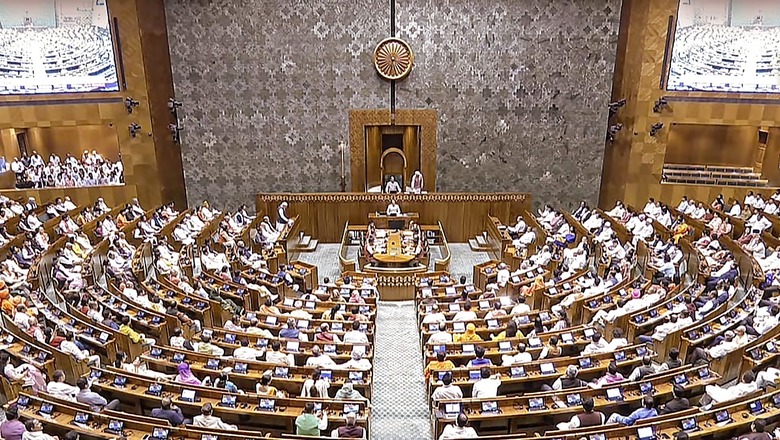
views
It was the September of 1996, when the women reservation bill was first tabled in Parliament. In the last 27 years, the bill had made it to the House several times but failed to become a ground reality. The last time, it reached the House was in 2010 when the bill managed to get a nod from the Rajya Sabha but failed to get a clearance from the Lok Sabha.
Cut to September 2023, the women reservation bill finally made it to the Lok Sabha, this time as ‘Nari Shakti Vandan Adhiniyam’.
While both BJP and Congress have been fighting for taking the credit for the bill, let’s look at how the UPA’s bill was different from that of NDA.
The 2010 Bill talks about 33% reservation for women in Lok Sabha, state assemblies and Delhi assembly for a period of 15 years from the date of commencement of the Act. It also has reservation for women from the Scheduled Caste and Scheduled Tribe communities. The new bill offers somewhat similar provisions.
But among the major differences was making delimitation compulsory before the implementation of the reservation and not mentioning states and Union Territories where there is just one Lok Sabha seat.
The 2010 bill said one-third of the total number of seats reserved for the SCs and STs will be given to women and one-third of the total seats will be reserved for women in Lok Sabha, assemblies in state or Union territories. The total 33% reservation will also count women from the SC and ST communities.
Further, it also said if the seat reserved for the SCs and STs in relation to a state or UT is one, then in every block comprising three general elections to the House of the People, the seat in the first general elections will be reserved for women belonging to the SC or ST. And no seat will be reserved in the other two general elections. The old bill also spoke about states/UTs where two seats are reserved for SC/ST, allowing women reservation on rotation-basis. This was for both assemblies and Lok Sabha. A similar practice is taking place in local bodies where there is 33% reservation for women.
The new bill allows for the rotation of reserved seats for women in the Lok Sabha, state assemblies, and the Delhi assembly after each subsequent delimitation exercise, as determined by Parliament. However, it did not mention states where fewer seats are reserved.
The new Bill has proposed that 33% reservation can be implemented only after the first delimitation that will take place after the first census post the act has been implemented. The next scheduled delimitation exercise has to take place after 2026, if not delayed.
It will be based on the first census taken after 2026. If everything goes as per the schedule, the next census has to be carried out in 2031. Only after which the delimitation will take place. However, the 2021 census has not taken place so far due to the outbreak of Covid. So if the census happens after 2026, delimitation can take place accordingly.
Further, the Bill is also different from what was being speculated. The new bill has no provision for reservation for women in Rajya Sabha or state Legislative Council. It also does not include women from the OBC, even as several parties were demanding it.
For the Bill to become a law, it has to get cleared from both Houses of Parliament.




















Comments
0 comment